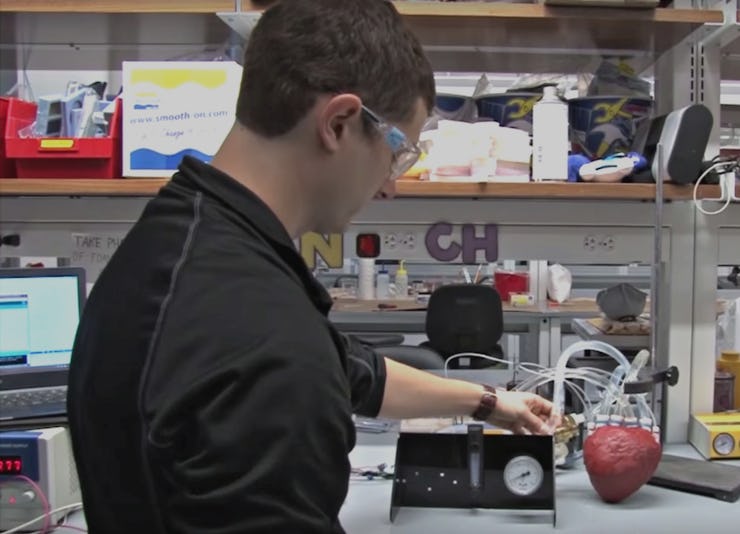Elastomeric Foam May Be the Future of Prosthetics
A new type of foam could change the biomedical field.

Researchers at Cornell University have created a new type of foam that may one day be used for artificial heart transplants.
The material, similar to memory foam, is made out of what the researchers call an “elastomeric foam.” The foam begins life as a liquid that must be molded into another shape: in this case, a human heart. Researchers used a 3D printer to create a mold of a human heart that the elastomer would be poured into. Once the polymer foam is set, it holds its form, but it’s also very flexible and stretchable.
Not only is this foam malleable, but it’s also lightweight and ultra-porous, too. An abundance of connected pores throughout the foam allows the material to “breathe” and grow 300 percent larger when air or liquid are pumped in, making it an ideal candidate to replace natural tissues. The pores are created by adding salt to the liquid polymer before it sets. Once the material hardens, then the salt is washed out, leaving numerous holes in the material. The porous nature of this foam makes it a viable competitor for the old artificial hearts made of metal and plastic. (Ouch!)
Another advantage this elastomeric foam has over the traditional artificial hearts is that it can be injected in one piece, rather than assembled from various small parts that are more likely to break.
Rob Shepherd, an Assistant Professor of Mechanical and Aerospace Engineering at Cornell, says that the team’s ultimate goal is to see this discovery allow for more artificial heart options. However, despite the huge success seen in their artificial heart-shaped pump, it won’t be an easy project to get that foam into patients.
The foam will have to go through much more extensive testing before it sees the inside of a chest cavity. In the meantime, Shepherd and his team have already started trying out other uses for the elastomer foam, namely prosthetics and soft robotics.